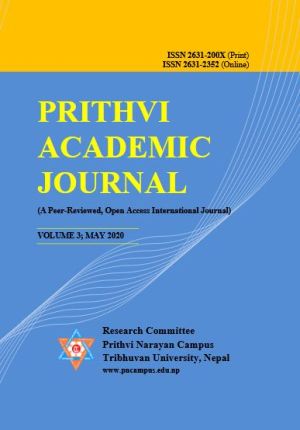Landslide Susceptibility Assessment: Identification and Hazard Mapping of Gandaki Province, Nepal
DOI:
https://doi.org/10.3126/paj.v3i0.29555Keywords:
Landslide susceptibility, hazard mapping, risk factors, MaxEnt modellingAbstract
Landslides considered as a common hazard, affecting constantly the administrative territory of Gandaki province, located in the central part of Nepal. Impact of landslides is significant due to its specific geological, anthropic, vegetation and other circumstances. The main aim of this study was to identify the factors determining landslides and forming a landslide susceptibility mapping of study area. The fieldwork was conducted, where 128 GPS locations was recorded throughout the study area. This study also used the maximum entropy model using MaxEnt software, taking into account of various landslide-causing factors, resulting major variables of landslides risk and formed susceptibility mapping of landslide. It is identified that slope and land use land cover are most important variables to increase the landslide risk. Findings highlight that lands around the riversides and steep slopes are more risky area in terms of landslides. Moreover, it is found that the area of 3371.32 km2 measured as landslide risk zone in this province, where Gorkha district categorized as most vulnerable place for landslide, comprising of largest area of landslide risk zone while Parbat district has low amount of risk land. Since the human casualties and property loss are the major consequences of the disaster, it is essential to identify and analyse the factors determining for landslide and developing the landslide susceptibility mapping of Gandaki province, which could be taken into account while developing mitigation and coping strategies.




